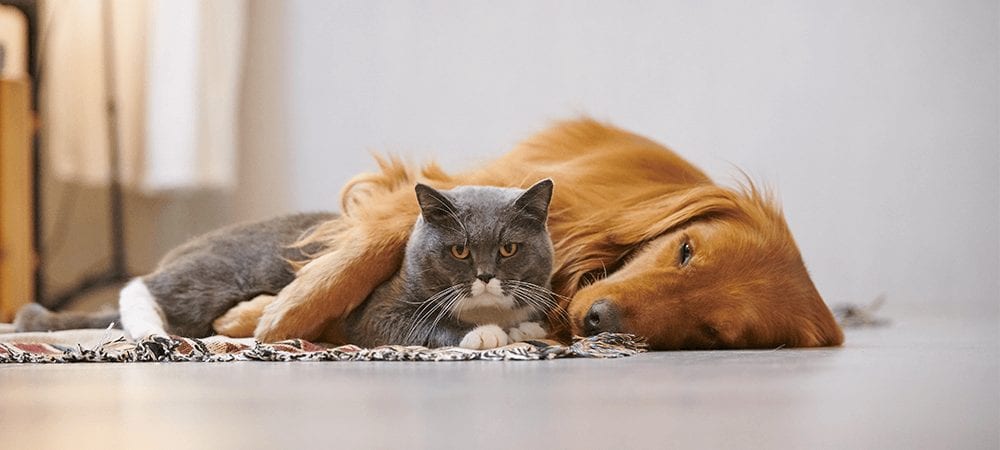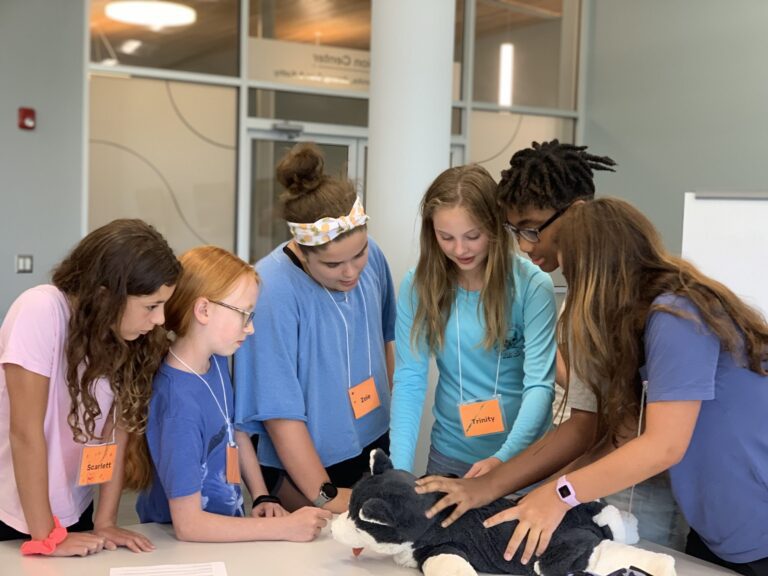5 Spring-Cleaning Tips for Pet Parents

Whether you’re dreading the drudgery or welcoming the workout, spring cleaning is a necessary chore for many of us. But when it comes to deep cleaning, pet parents have a few extra tasks to think about.
We’ve put together a list of spring-cleaning tips for pet parents to help with that. We also suggest some safety issues to consider along the way.
1. Clean and Deodorize Your Home
First, set the mood. Choose a warm, sunny day to open the windows and let the spring freshness in. Ask Alexa or Siri for a high-energy playlist, and you’re good to go!
Start by getting rid of hair and dander. Use a damp rubber glove or a squeegee to pick up stubborn hair from soft surfaces. Sweep or dry mop floors and vacuum the furniture and drapes.
Pretreat any urine stains on carpets with a mixture of baking soda, vinegar and warm water. You may even want to sprinkle baking soda (a natural deodorizer) over the entire carpet and let it sit for 15 minutes, then vacuum.
For a more long-term pet-safe deodorizer, add a potted plant or two to particularly smelly areas.
SAFETY TIPS
1. Baking soda is a pet parent’s best friend when used in small amounts. Ingesting a large amount, however, can be dangerous to pets. Don’t let the baking soda sit for a prolonged period. Always vacuum it up right away, and don’t leave the package where your pets can get to it.
2. We’ve seen advice on the Internet to use coffee grounds as a natural deodorizer. We don’t recommend this! Ingesting coffee grounds can cause caffeine poisoning in pets, and severe cases can be fatal.
3. Some folks suggest using essential oil diffusers to deodorize. We don’t recommend essential oils because some are toxic to dogs and cats.
4. Some houseplants are also poisonous to pets. Check this ASPCA list of plants that are unsafe for pets before purchasing.
2. Clean Your Pet’s Belongings
Wash soft toys, blankets and bedding in the washing machine using hot water. Hard toys and food dishes can go in the dishwasher.
Clean crates, carriers, and litter boxes with a solution of vinegar and water, rinse thoroughly and allow to dry outside.
SAFETY TIPS
1. Some experts recommend a mixture of bleach and water for crates and carriers. Bleach in this diluted form is safe for cleaning but can be harmful if ingested. If you use it, don’t let your pets near the water bucket or open bottle, and be sure to rinse thoroughly.
2. As you collect toys for the dishwasher, inspect them for damage. Throw away any with loose pieces that may be choking hazards.
3. Deep Clean Your Pets
Your pets themselves may need a deep cleaning. Brush dogs before bathing to get the heavy dirt out. Brush again after the bath to remove loose hair and detangle any matted areas. Schedule a summer grooming (or do it yourself).
As for cats, they are good self-groomers, but some experts recommend a bath once or twice a year. If yours is accustomed to baths from kittenhood, go for it. If not, attempts to bathe an older cat could be stressful for the cat. With occasional exceptions, regular grooming is all the conscientious kitty needs.
SAFETY TIP
1. Human shampoos are not appropriate for pets because their skin pH levels are different. For the same reason, never use dog shampoo on a cat. This especially applies to flea shampoo. The insecticide and other ingredients in dog products can be harmful to cats.
4. Spruce Up the Yard
Clean up any poop that hasn’t decomposed over the winter. It can still spread germs. If you don’t want to do it yourself, find a human “pooper scooper” on Angie’s list. (Yes, this really is a thing!)
Look for bones or dead animals—anything that could be a choking or health hazard to your pets.
Check any gates or fences and repair them as needed.
SAFETY TIPS
1. Know what’s growing in your yard. Like houseplants, some are poisonous to pets. Again, check out the ASPCA’s list of toxic plants and remove any that your pets can access.
2. Be careful about any pesticides you use on your lawn or garden. Research chemicals you’re considering. Read labels to be sure they’re safe for pets.
5. Organize Health and Wellness Items
Sort through flea and tick products and other meds. Toss any that have expired and add them to your shopping list.
Spring is also the perfect time to organize your pets’ health records. Take note of their last annual exam dates and schedule this year’s exams and vaccinations if you haven’t already.
A Final Word
Spring cleaning is a necessary evil for some and a deeply satisfying ritual to others. Either way, we hope you find this list of spring-cleaning tips for pet parents beneficial for all family members, two-legged and four-legged alike.


